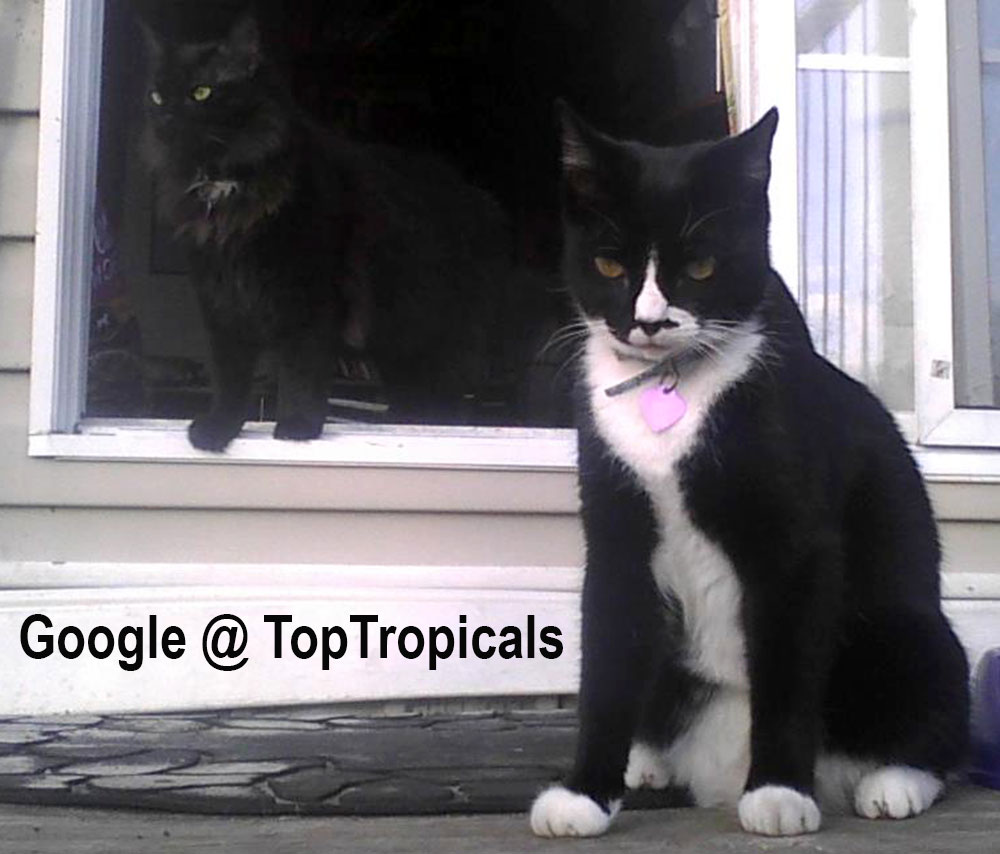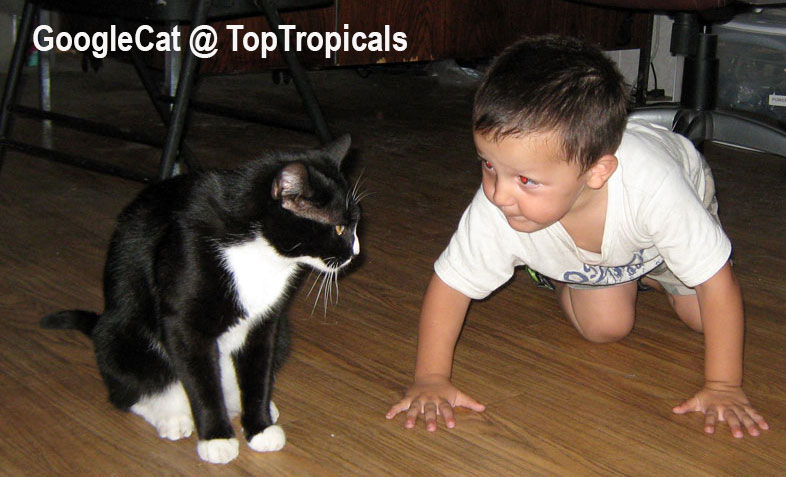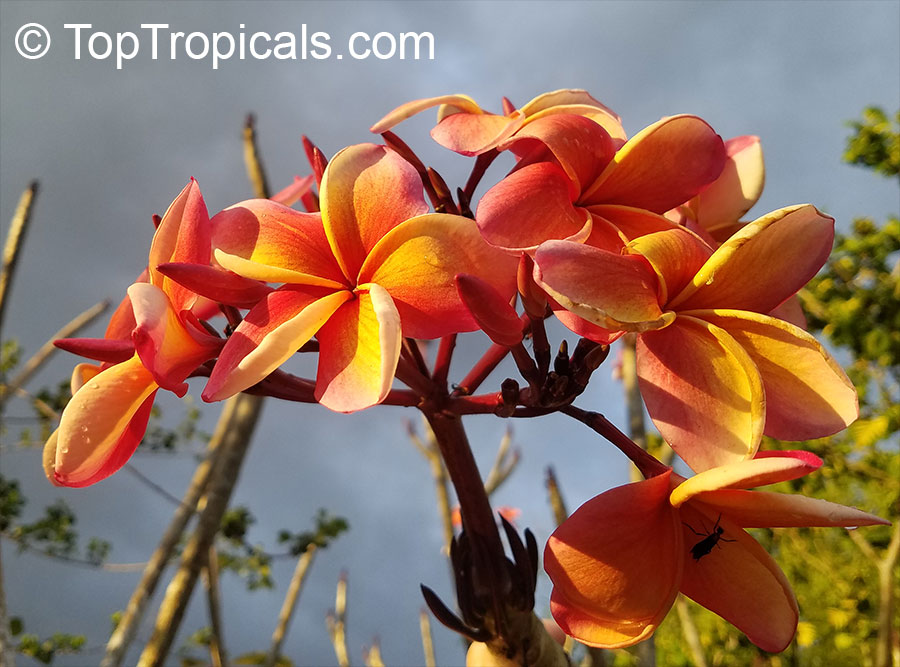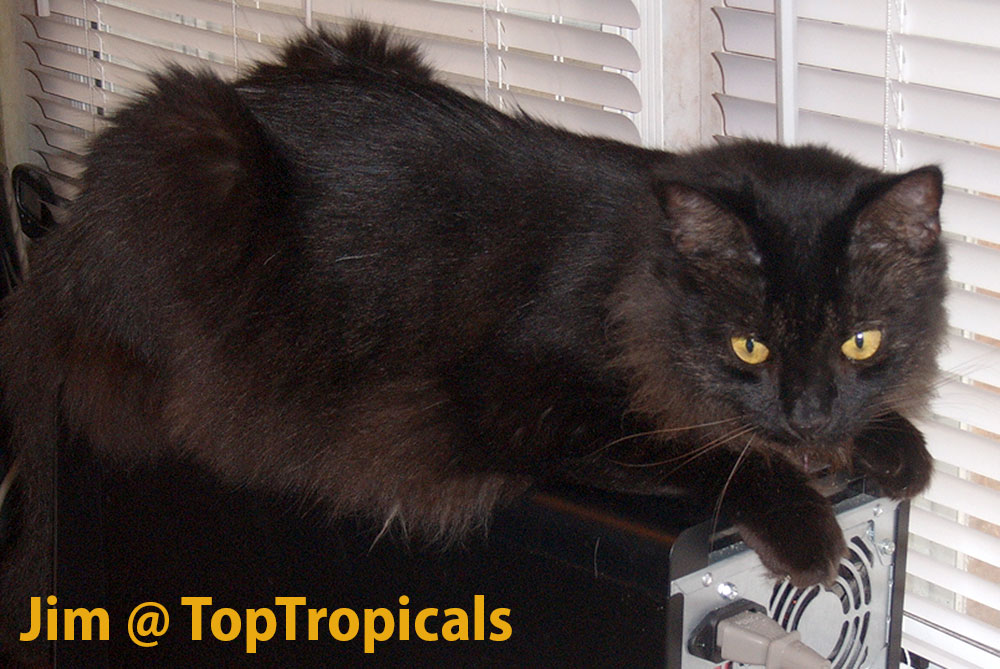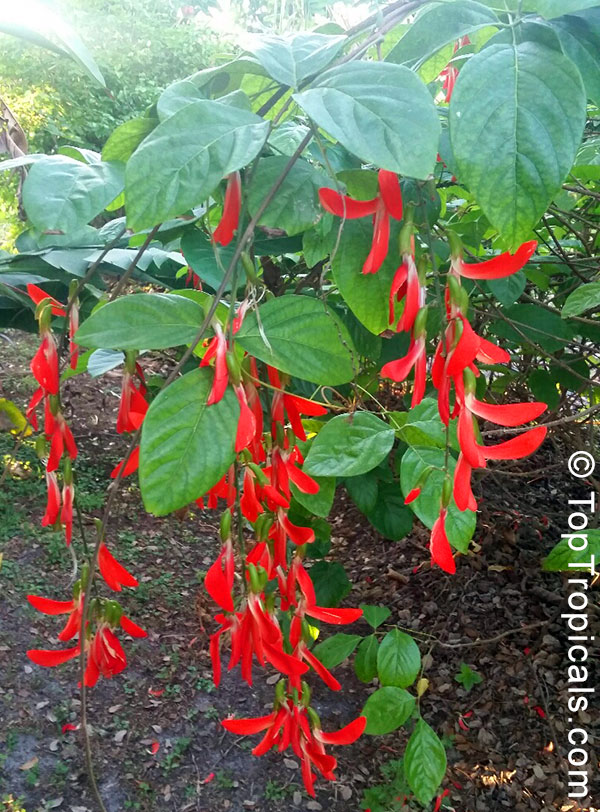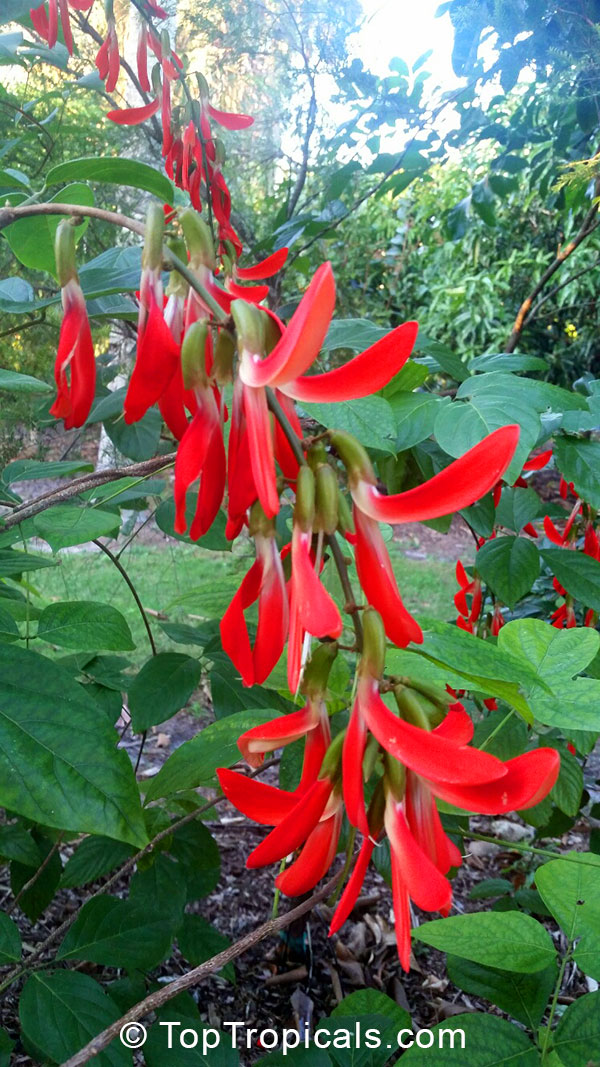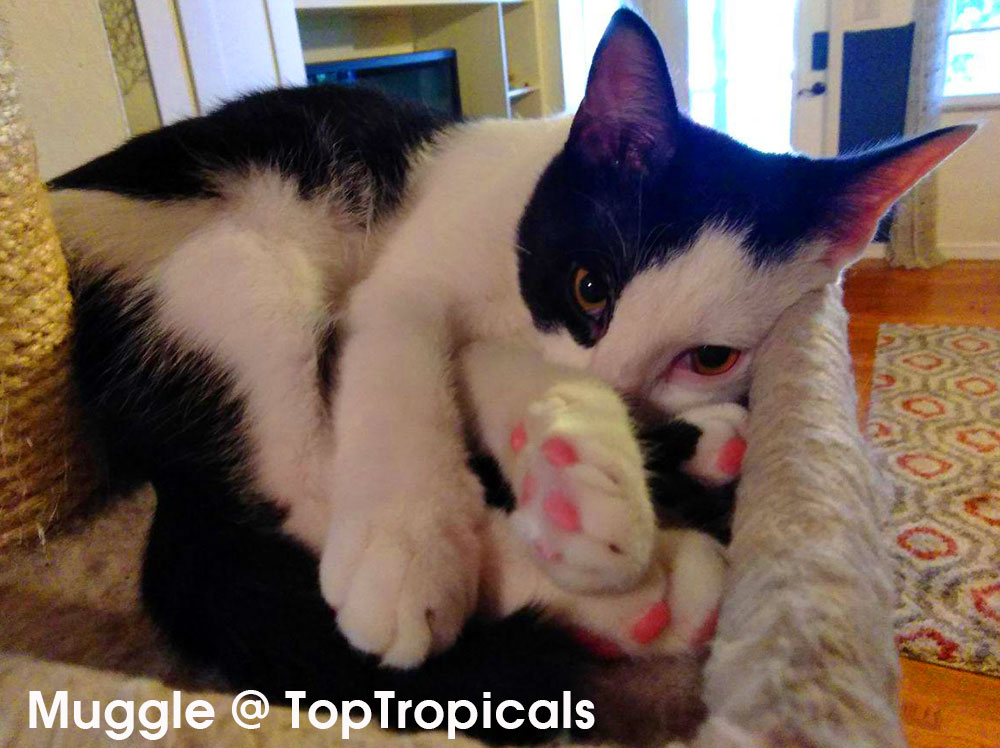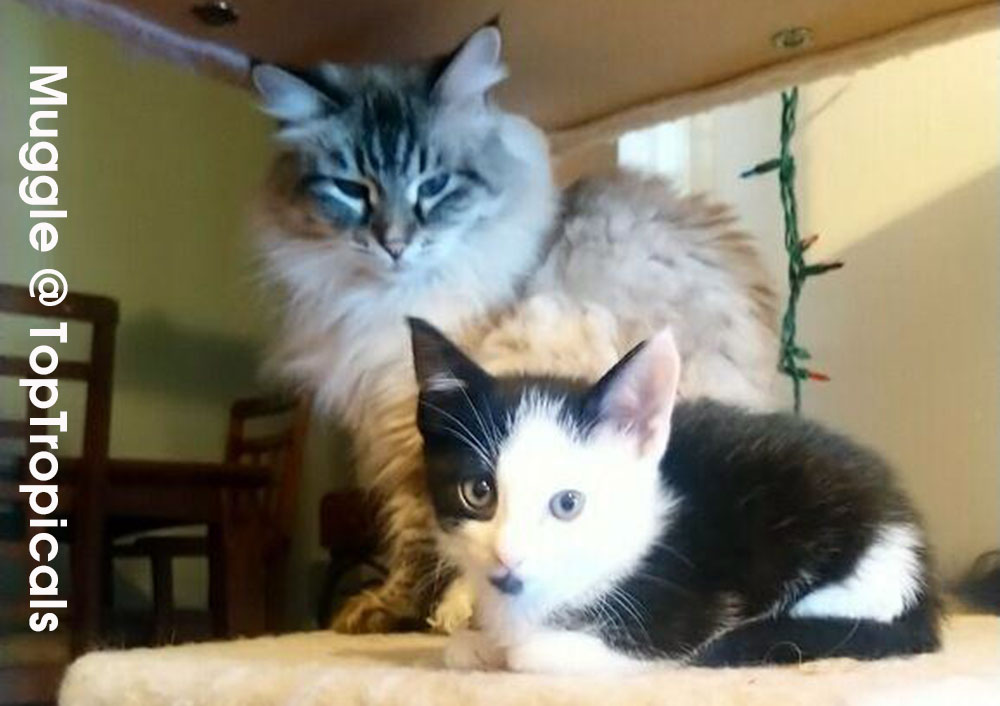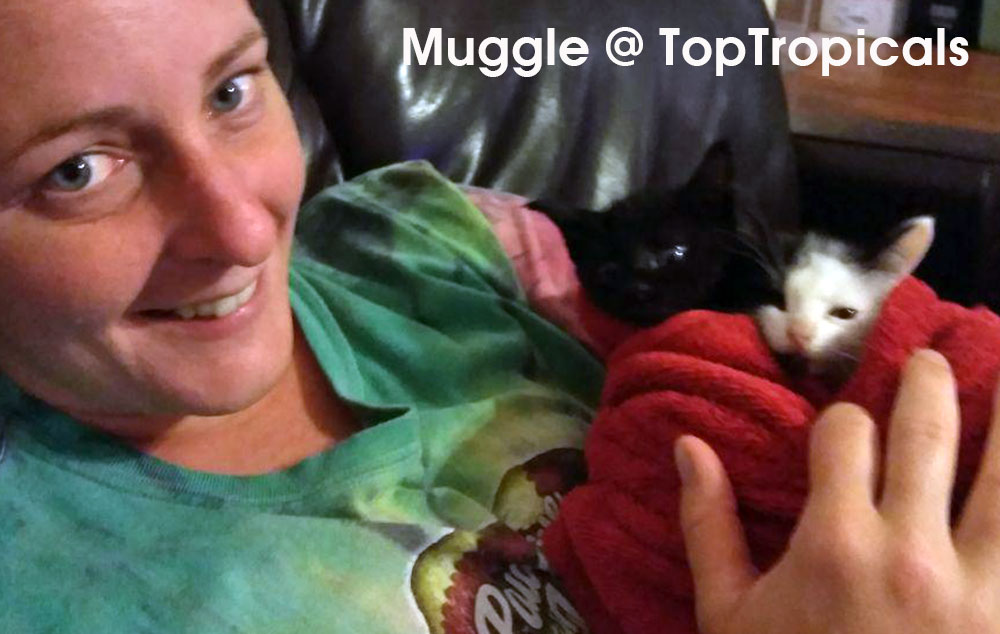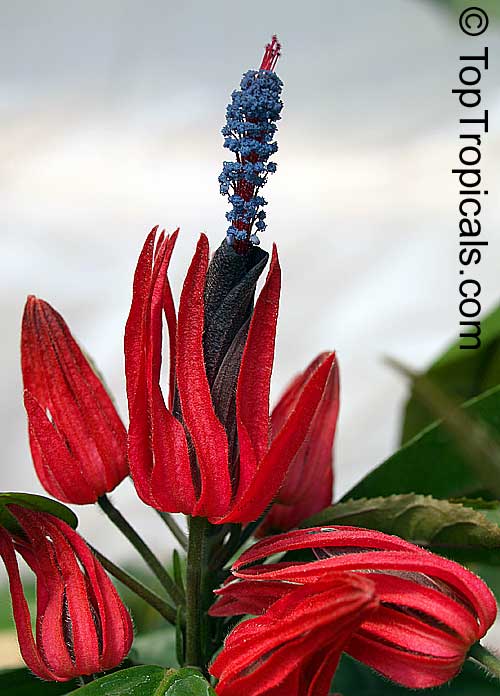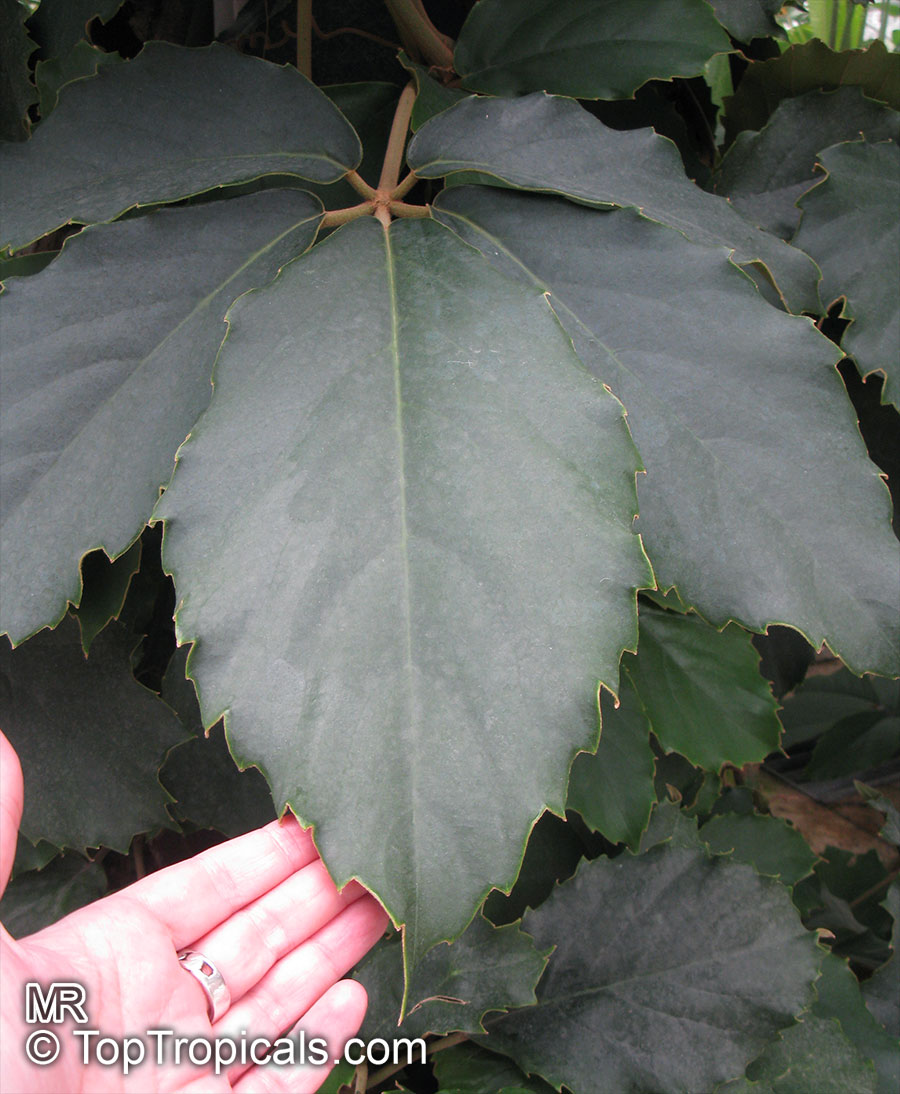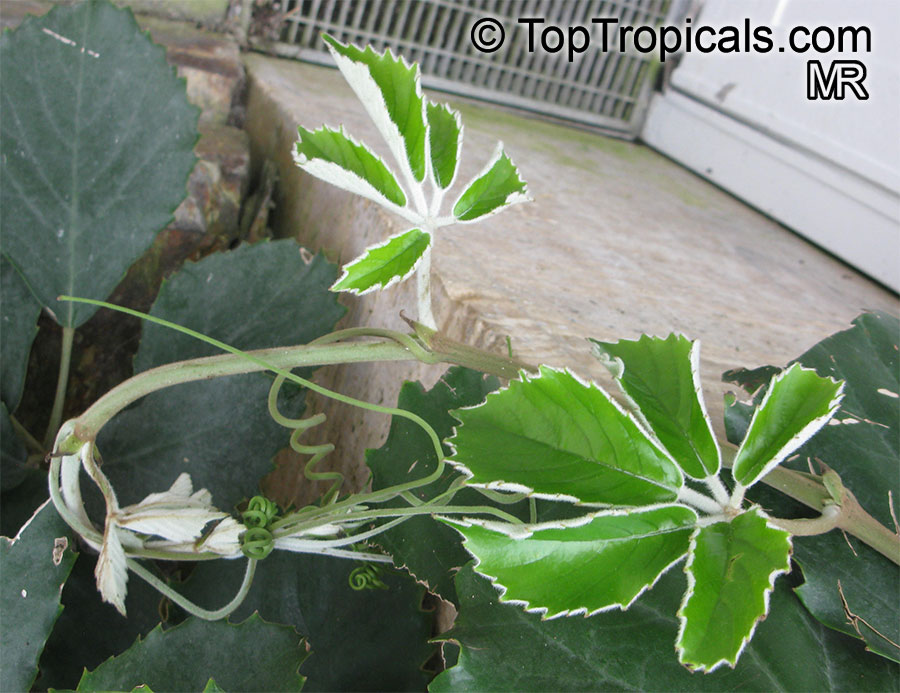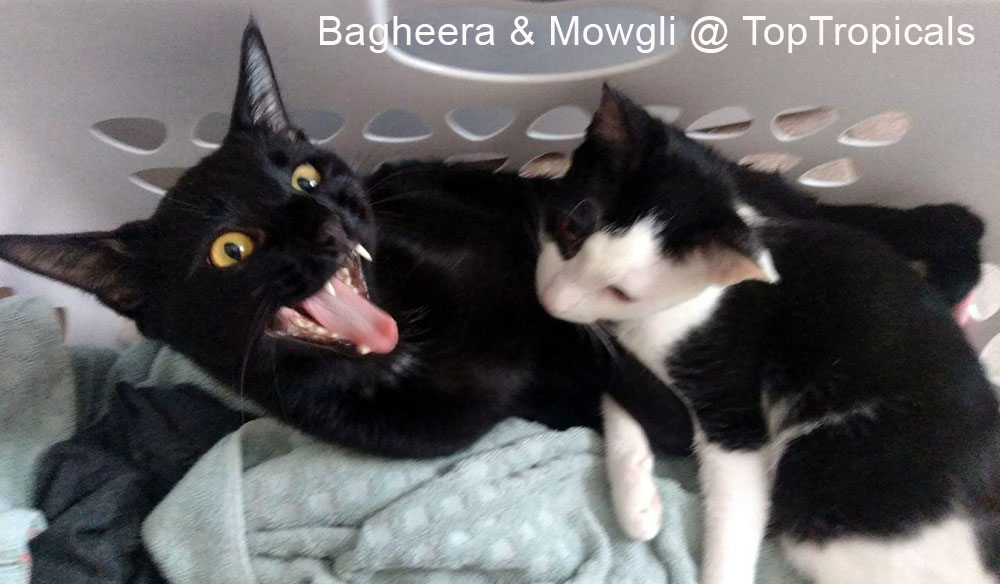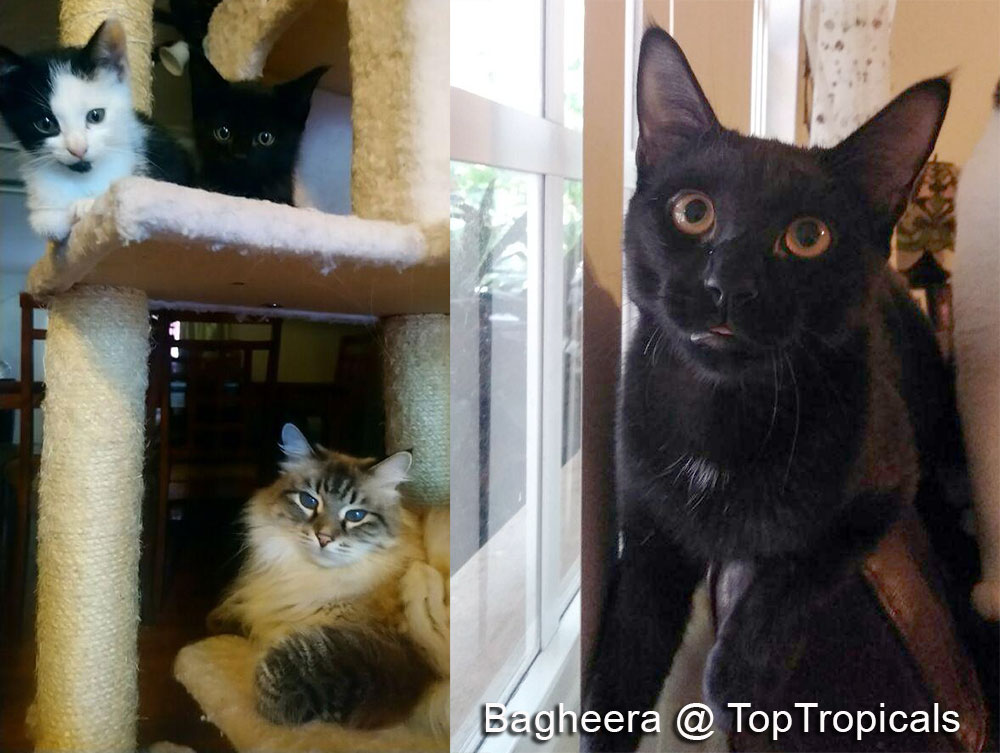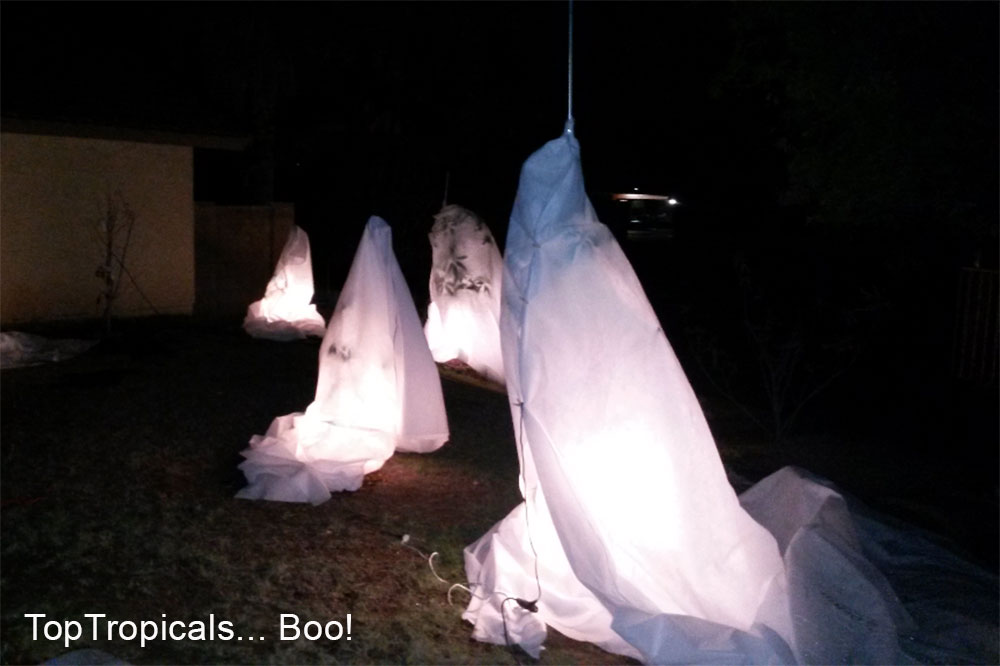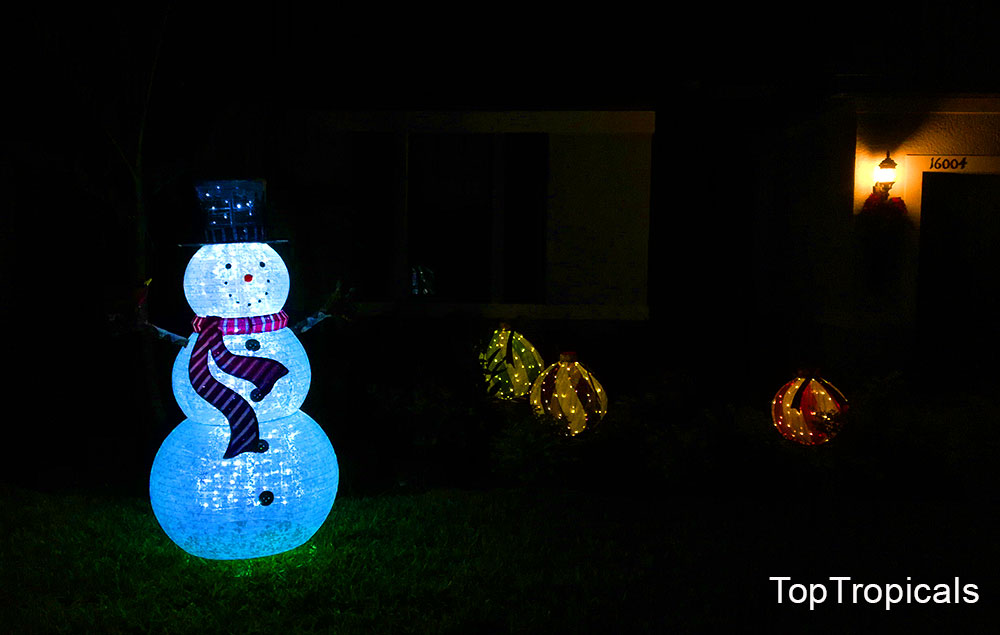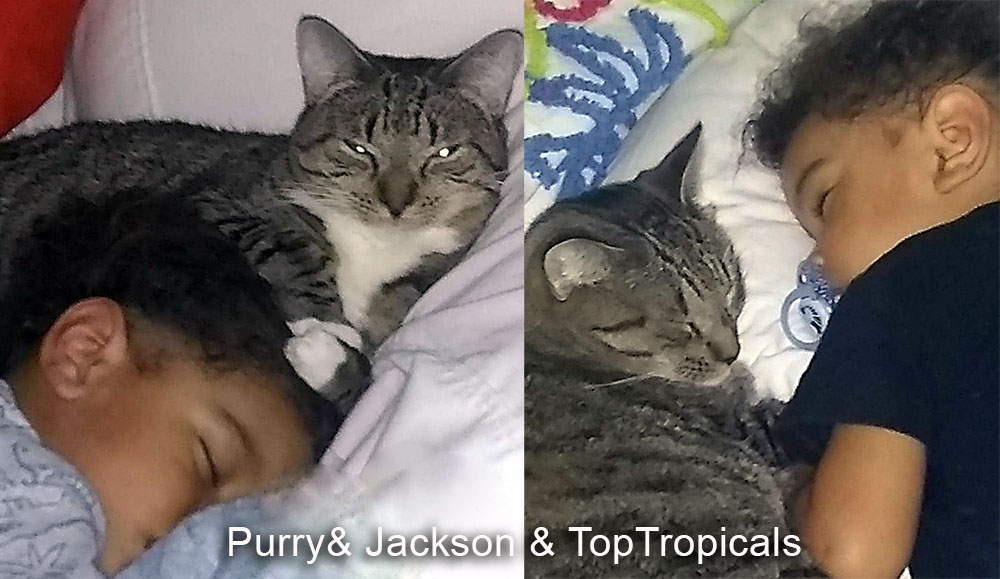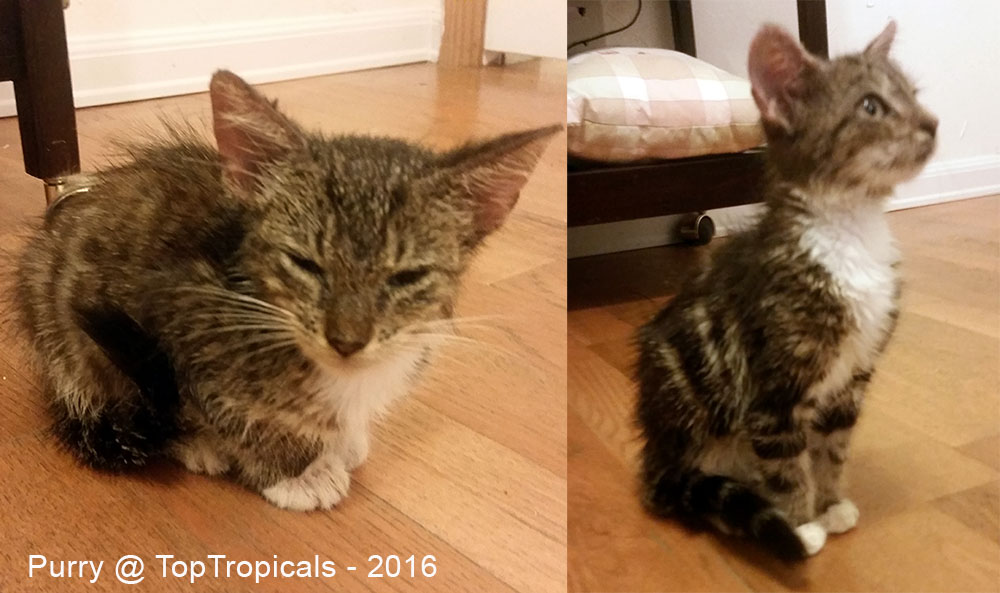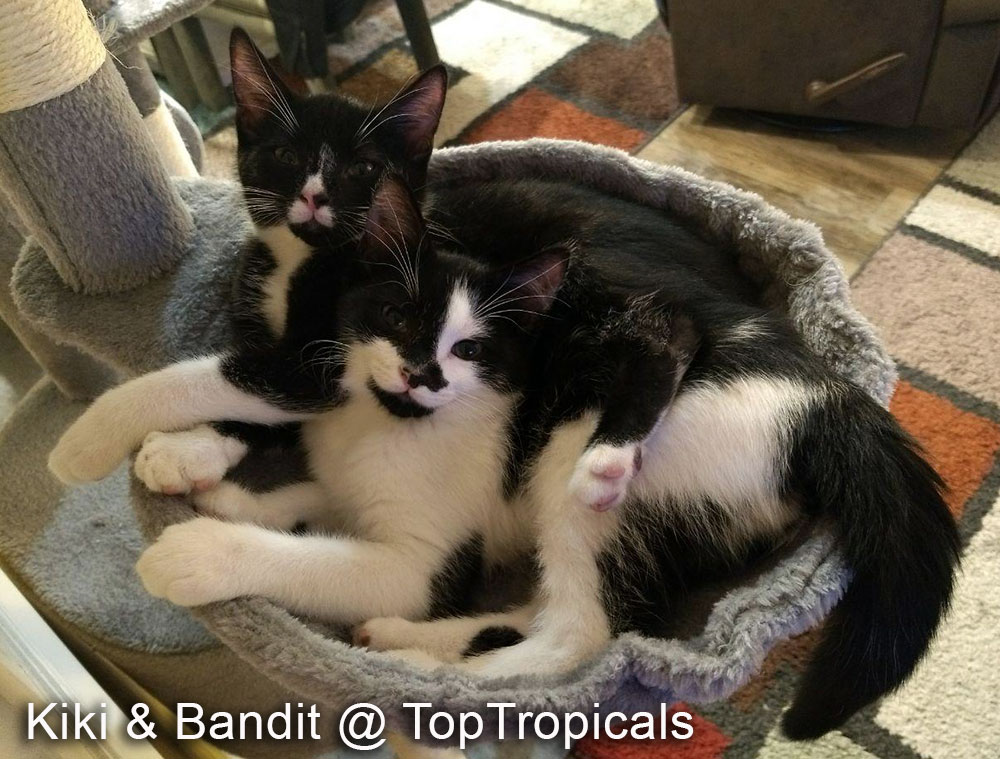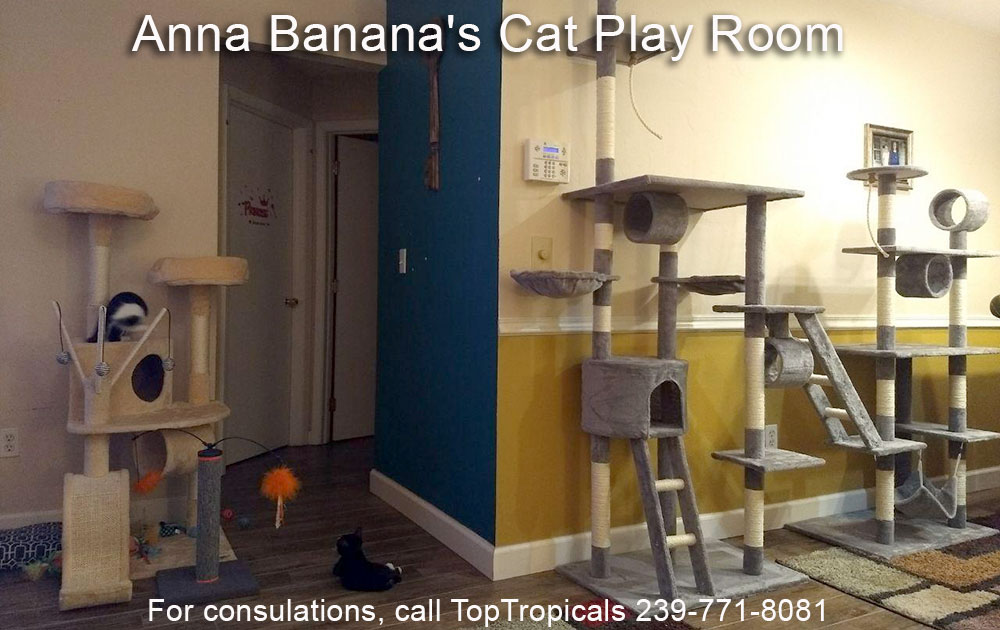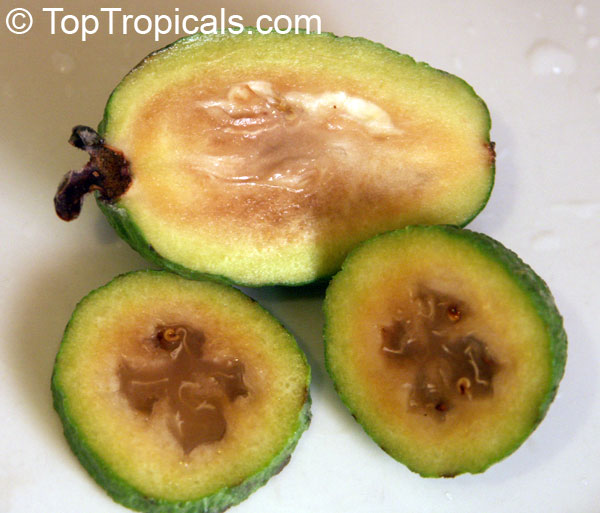Garden Blog - Top Tropicals
Date:
EASY GROW-BOX
How to quickly germinate tropical seeds in winter
By Mark Hooten, the Garden Doc
Q: I live in the New England area where the winters are very long and dreary. I plant both a veggie and flower garden during the warmer seasons and am especially fond of growing chili-peppers. On account of most chili's longer growing seasons, I need to get already established plants in the ground as soon as the weather is warm enough. My problem is that despite my best attempts to germinate and grow seedlings ahead of time - even in my sunniest window - I just can't seem to keep the soil evenly warm enough to get them to germinate, no matter how warm the room is kept. And on the occasion they do come up, the seedlings always seem to remain weak and stunted, likely owing to the especially low humidity of winter. I also tried using an electric seed-starting heating pad, and the results were only a little better. Are there any tips you could give me?
A: Yes, I understand your issues and can sympathize! While it might be surprising to some, even here in sunny S.W. Florida, there are long stretches of winter weather where the ambient temperatures are simply too cold for germinating many of the more tropical seeds, such as the notoriously warm-weather chili-peppers. Also, I am likewise a fan of chilis, and always have at least a few different kinds growing at any given time. I have two great suggestions...
CONTINUE READING >>
Date:
Meet PeopleCats of TopTropicals. Cat of the Day: Google the Cat. The Brain.
Google is the second oldest cat of TopTropicals, after Jim. Google lives in the same house with Jim where they both help us to
develop new features for our website.
Google is the most intelligent cat on Planet Earth. Originally we got
him from an animal shelter after his first adoption failed: someone returned
him back to the shelter... It was hard to believe because he was so cute...
but soon enough, we realized why someone was spooked away... Google is TOO
smart! When he looks at you and rolls his eyes, you instantly have a feeling that
he can literally see through you, and read your mind...
It didn't scare us, of course. On opposite, Google became very helpful with
writing database codes, engineering difficult construction tasks, and other
comprehensive projects that require a brilliant intellect. Since 2007, Google
has been a personal assistant of one of the TopTropicals owners, and their
minds are worth each other. Google never leaves his desk until he makes sure
every complicated task is completed.
Google loves little children (for conversations), shrimp (for snacks)
and hi-tech projects (for fun).
Check out and more Cat of the Day stories.
Date:
Plumeria cold protection
Q: We have a purple-flowering plumeria which resides on our sunny deck during the warm months and then Winter vacations on our back porch where we can close the plastic film windows and where it stays above 50 degrees (overnite) until it can get moved outside again. We live in zone 8+ in South Carolina and I would love to plant it outside. Do you think if we ghost-covered it when alerted that we would have an overnite freeze, that it would survive being planted in the ground and recover to flower when warm? I don't believe the soil in our yard has ever frozen below the top 1/2 inch or so, and never for more than a few hours at a time. What do you think?
A: Plumerias are tropical plants, which means, they need frost-free environment. Even if the ground is frozen only on "the top ½" or so" - this may be enough to kill the plant. From our experience, plumerias can withstand a few hours of windchill frost (not frozen soil), but even if they survive, they may get some branches damage, and recovery may take so long that the plant may not even bloom the next year. So I wouldn't take that risk even with a ghost-cover cold protection. We have customers who grow tropical plants in the ground in colder areas, but they have greenhouse protection: this means, the soil is warm and the air temperature is maintained above 45-50F. For example, this Greenhouse in Virginia.
We recommend to continue growing your rare plumeria in container and
move it inside when temperatures drop below 50F (recommended) and for sure when
they drop below freezing. Plumeria can take a cold night (a few hours of
upper 30's) as long as it is followed by a nice warm sunny afternoon with at
least upper 50s. Otherwise, keep it indoors. The good news is, since plumerias
are deciduous and have no leaves in winter, low light level won't affect the
plant.
Just make sure to minimize watering and keep the plant on a dry side
until it starts growing new leaves in Spring. You may continue fertilizing once
a week with half-doze of Sunshine boosters - Sunshine TotalFeed. This will maintain the plant healthy and prepare
for the blooming season in Spring.
Date:
Meet PeopleCats of TopTropicals. Cat of the Day: Jim the Founder
Jim is the oldest cat of Top Tropicals. In fact, he is one of the
Founders. In 2004 a tiny kitten showed up at first TopTropicals Nursery - a small
quarter acre in Ft Lauderdale... Jim looked very important and confident and
told us that he wants to stay with us because he sees a great future for
TopTropicals... and he was right. Since then, Jim traveled with us through all
nursery locations we ever had!
Jim used to lay on top of a warm monitor and help with our first
website designs... if you look at his favorite monitor in the picture, you now can
imagine how old this cat is!
In spite of his age, Jim is very active and likes to eat a lot. He
believes that a good meal is key to a healthy living, and prefers variety. He
eats everything: meat, fish, soup, pasta, pizza, veggies, cucumbers, salad...
eats well and stays healthy!
Jim happily participates in all costume parties. Yes, it is him in a
Santa costume greeting you at the top of this newsletter!
Don't miss out: Loquat Big Jim - we only have 4 plants, they all named after Jim!
Check out and more Cat of the Day stories.
Date:
Hardy Dwarf Red Jade Vine
by Onika Amell, tropical plant specialist
Q: I simply adore Jade vines. I think they are the Queens of all the vines! I have been very been successful growing the green Strongylodon macrobotrys and purple Jade Mucuna pruriens vines here in Clewiston Florida but I am struggling to make the Red Jade vine (Mucuna benettii) thrive. It keeps dying on me during cold snaps. Any suggestions?
A: ...Here is our solution for you. Consider growing a Dwarf Red
Jade Vine or Camptosema grandiflora. It is closely related to the regular and ultra
tropical Red Jade Vine Mucuna benettii but much tougher and hardier. It is
considered to be one of the more cold hardy of the Jade Vines...
This gorgeous, rare and unusual vine is a sheer showstopper. It is easy
to grow and it will reward you with long fiery chains of dangling orange-red
flowers that bloom from late fall to early spring. Even though it is listed
as a dwarf do not be fooled. This vine will get quite large and will need a
strong support over time. The flowers are long and heavy and will show best
when planted on an arbor or pergola where they are able to hang down and wow
you and your visitors. It puts on a wonderful display. Butterflies, bees and
hummingbirds will all thank you for growing this stunner!...
CONTINUE READING >>
Date:
Meet PeopleCats of TopTropicals. Cat of the Day: Muggle the Snuggle
The sweet talking bathroom cat
Muggle* (or some call him Mawgli) is the little brother to Bagheera. We call him the sweet talker because he really does talk to you. As soon as he sees you he wants to have a conversation. He meows at you and if you meow back he will continue the talk. He is our bathroom cat because he loves to sit in the bathroom with you and purrrrrr. We think maybe he sees this time as his alone time with his humans, his one-on-one time when he doesn't have to share the attention with the other PeopleCats!
* His name is actually Muggle, Jamie named him after Harry Potter which she loves.
Check out and more Cat of the Day stories.
Date:
Pavonia for hummingbirds - a cinch to grow!
by Mark Hooten, the Garden Doc
...Flowers of the Brazilian candle - Pavonia multiflora are designed to be visited and pollinated strictly by hummingbirds. The narrow, upright, barely opening tubular flowers present a display any hummingbird can truly appreciate. While our eyes simply see a dazzling combination of reds, violet, and blue, the super-vision of those tiniest of birds perceive several more colors in the infra-red and ultra-violet spectrum, visible only to them and certain insects! Sort-of like electric lights along Times Square flashing "HERE I AM"! ...
CONTINUE READING >>
Date:
Meet PeopleCats of TopTropicals. Cat of the Day: Kevin Coconuts, brother of James Coconuts
Many of you know well James Coconuts who has been in charge of our Customer Service. Only recently James discovered a twin brother! Kevin Coconuts lives with Sue and Mark (our horticulturist) and helps Mark to grow all his exclusive rare plants. Here is Kevin's story told by Sue...
"...One fall day about a year ago we had a visit from a gangly little stray who seemed drawn to our home. We originally thought he was the kitty from across the street, as his markings are almost identical. We repeatedly shooed him off but the next day, there he was again. His unassuming, humble personality drew us in. Upon closer observation we could see he was a male, while the one across the street is female, so we realized he did not belong over there. He seemed to have nowhere else to go...
With his silly playful attitude, Kevin wormed his way into our hearts
and we decided to accept him as one of ours. Upon entering our house for the
first time, he seemed to know his way around, and within a couple hours he was
fast asleep on the couch. Our two other cats (Amun & Midnight) did not seem
perturbed, which is very unusual for CATS, as anyone with cats knows! We have
enjoyed Kevin's warm and comical demeanor and could not imagine life without him. He is a bright light that lifts the hearts of all who meet him!"
Check out and more Cat of the Day stories.
Date:
Chestnut vine - perfect plant for home and office
by Onika Amell, tropical plant specialist
Q: I was visiting Ford Myers recently and attended the Edison Ford Winter Estate Garden Festival. I could not help but notice two stunningly beautiful Chestnut vines on your stand at the event. I have never seen this plant anywhere before. I was told they make a great indoor plant. I was also told your company ships to all 50 states. I have been looking for something unusual to grow in my office and this may be just the plant! How do I take care of it indoors?
A: If you want to bring a little bit of the tropics into your office, you have chosen the perfect plant. Tetrastigma voinierianum - Chestnut vine - is a long-lived perennial plant that will stay green all year long. It is a native of Laos and a member of the grape (Vitaceae) family. This is a truly striking vine with beautiful lush and large leaves. It is a vigorous climber with 8 inch or longer tendrils for climbing purposes. The underside of the leaves has clear pearl-like bumps, which are actually plant secretions that are used by ant colonies when growing in its wild habitat...
CONTINUE READING >>
Date:
Meet PeopleCats of TopTropicals. Cat of the Day: Bagheera
Bagheera and Mowgli are Kristi's PeopleCats, originally they came together and they stick together. As little kittens, they were raised by Moe, the Mama-cat. Although she is not technically their Mom, but... she is a Mom for everyone!
Bagheera was born with his brother at a gator farm. He was too little to leave his mom, but he needed out. Bagheera is one of the sweetest boys we know. When he was a baby he could not sleep without laying on Kristi's face, both paws stretching across her mouth. Now he's a big brave boy. He rules the inside PeopleCats, stealing food from his human's plates and asking forgiveness at night when he lays above your head with his hands on your face. He's a reminder that we are all still little kittens on the inside...
Bagheera's new nicknames are Mr Biggs, Biggie and Biggy Biggy Biggy!
Check out and more Cat of the Day stories.
Date:
Ghost Cold Protection
Q: Has anyone ever tried using heat packs under frost blankets to protect tropical plants from frost?
A: The reality is, the heat packs used for shipping do not have enough heat capacity to create efficient warming effect. From our own experience, the best way is to use small 25W incandescent bulbs which produce lots of heat (considering observing all safety precautions and fire safety). Some gardeners use Christmas lights. See picture of our plants in the ground during a cold night. We called them Ghost Cold Protection! ;)
See more columns on cold protection:
Seven rules of cold protection for tropicals
About Cold Protection
Cold protection - winter action for your plant collection
Tropical Treasures articles
Date:
Meet PeopleCats of TopTropicals. Cindy's Purry - Jackson's Nanny
Purry came in the same litter with LadyBug, Ricki, and Charlie.
She now lives in Cindy's house as an indoor cat. She is the most lovable and purring purrrrson.
Purry (or Pursey) has a little ward she faithfully looks after... Her soft purrs put Baby Jackson Michael every time to sleep!
Check out and more Cat of the Day stories.
Purry - 2016
Date:
The Florida Native Banyan
by Mark Hooten, the Garden Doc
...The most impressive plant-life for me was a single native tree growing near a parking area along the Bay. It was the largest, oldest, "Shortleaf fig" I have ever seen. It was growing on a mass of bare exposed karst limestone and bore a small plaque describing it as being the largest Ficus citrifolia in the National Park. As it was dropping some of its little fruits at the time, I ended up taking a couple home for cultivation...
CONTINUE READING >>
Date:
Meet PeopleCats of TopTropicals. Anna Banana's Kiki and Bandit
Everyone knows and loves our Anna Banana - the Heart of Top Tropicals
Customer Service. Today she found herself another exciting project... to build
a Cat Play Room! She sacrificed her whole living room and the whole paycheck
for that.
The girl kitty with a black face is Kiki Tails. She is a bobtail.
Bandit is a black and white boy with a white tip on a black tail. Anna Banana got
them when they were just 7 weeks old. Kiki and Bandit were born on August 26,
2019, in Buckingham, just down the street from Top Tropicals Nursery!
Call Anna Banana's direct line 239-771-8081 to say hi to Kiki and Bandit! We will follow up on these babies and soon will update you with their new stories. Stay with us!
Now, here is Anna Banana's million-dollar question to her favorite customers: how do Cats and Plants go together in your garden or indoor plant collection? Tell us how your cats help you to grow plants, with pictures! The Winner will receive a FREE plant of $50 value! Participating stories and photos will be featured on Top Tropicals Facebook page.
Please use our contact form to submit your stories with pictures, with a subject "Cats in the Garden Contest"
Check out and more Cat of the Day stories.
Date:
Flavor of Feijoa Superfood
by Onika Amell, tropical plant specialist
Q: What exactly is Feijoa - Pineapple Guava? Does the fruit really taste like pineapple? I am curious to know if it is easy to grow.
A: Feijoa is certainly one of the easiest fruit trees to grow as it does
not require much care. It is an attractive, evergreen tree or large shrub with
dark green, oval, leathery leaves. It has an abundance of uses in the garden
and produces lovely edible flowers and fruit! The fruit is eaten fresh,
added to smoothies or fruit salad and is also commonly used to make delicious
jams and wicked chutneys. Feijoa fruit go a long way in flavor.
This plant is drought tolerant and will grow in almost any soil type. It
loves full sun or partial shade and is wind resistant. A lot of gardeners like
to grow it as a wind barrier for this reason. It can easily be shaped into a
dense, informal hedge or screen that needs very little pruning. Because of
this density, it provides excellent shelter for all kinds of wildlife.
Butterflies, birds, and butterflies will all love you for growing Feijoa!
Space the plant five feet apart to create a wind barrier hedge. Heat does
no not bother it at all and it will also withstand temperatures to 10 degrees
F.
The plant gets its names from the delicious perfume it emits. Some folks
seem the fruit taste like pineapple, with a slight minty undertone. Others feel
the flavor reminds them of juicy fruit gum! The texture is described as
smooth and slightly gritty - almost like a pear, but firmer.
If you prefer to grow this plant as a tree rather than a large shrub,
simply remove the lower branches up to one-third of the tree's height over a
period of time. The Pineapple Guava can grow up to 15 feet wide and tall. They
also do really well as a container plant on patios where you can truly enjoy the
lovely fragrance of the fruit. It prefers rich, organic, well-drained soil
and will need light fertilization every other month in most soils.
We recommend:
Fruit Festival Plant Food - Super Crop Booster
Mango-Food - Smart Release Fruit Tree Booster
SUNSHINE-Honey - Sugar booster
SUNSHINE C-Cibus - Crop Nutrition Booster
Pretty, pink, edible flowers will wow you from May to June, followed in late summer or fall by the delicious and fragrant fruit. An interesting thing about this fruit is that you don't pick it. It falls to the ground when it is ripe. Or simply place something under your tree, like a tarp, and shake the tree. The ripe fruit will fall off. You can store the fruit in your refrigerator for up to a week. And remember! The fruit of the Feijoa is not only a very rich source of soluble dietary fiber, but also an excellent source of Vitamin C, and very rich in antioxidants. They are also low in calories. Each fruit only holds 55 calories.




